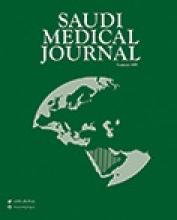Abstract
OBJECTIVE: Comparison of polymerase chain reaction (PCR) and culture for detection of genital mycoplasma (Mycoplasma hominis, Mycoplasma genitalium, and Ureaplasma urealyticum) in clinical samples from patients with genital infections.
METHODS: Duplicate genital swabs were taken from 210 patients, referred to the gynecology clinic of Rasool Hospital, Tehran, Iran between December 2007 and June 2008. They were transported to the laboratory in a selective mycoplasma transport medium and in phosphate buffer solution. The specimens were inoculated into specific broth and solid medium for culture. Characteristic mycoplasma colonies were determined with Diennes' stain and examined microscopically. For PCR, samples were analyzed with genus specific primers. The primer sets, which were originally designed in our laboratory, amplified a 465 bp fragment (Mycoplasma genitalium), 559 bp fragment (Ureaplasma urealyticum), and 630bp fragment (Mycoplasma hominis). Samples containing a band of the expected sizes for mycoplasma strains were subjected to digestion with a restriction endonuclease enzyme.
RESULTS: Of the 210 samples, mycoplasma strains were isolated from 83 patients (39.5%), (23 mycoplasma isolates, 11%; and 69 ureaplasma isolates, 32.9%) by using a selective mycoplasma isolation media. Using PCR, a total of 120 (57.1%) samples were found to be positive for mycoplasmas (28 mycoplasma spp., 13.3%; and 67 ureaplasma spp., 31.9%) and co-infections with both species were detected in 25 samples (11.9%).
CONCLUSION: The PCR was found to be highly sensitive when genus specific primers were used for diagnosis of genital mycoplasmas in comparison with culture.
- Copyright: © Saudi Medical Journal
This is an open-access article distributed under the terms of the Creative Commons Attribution-Noncommercial-Share Alike 3.0 Unported, which permits unrestricted use, distribution, and reproduction in any medium, provided the original work is properly cited.






